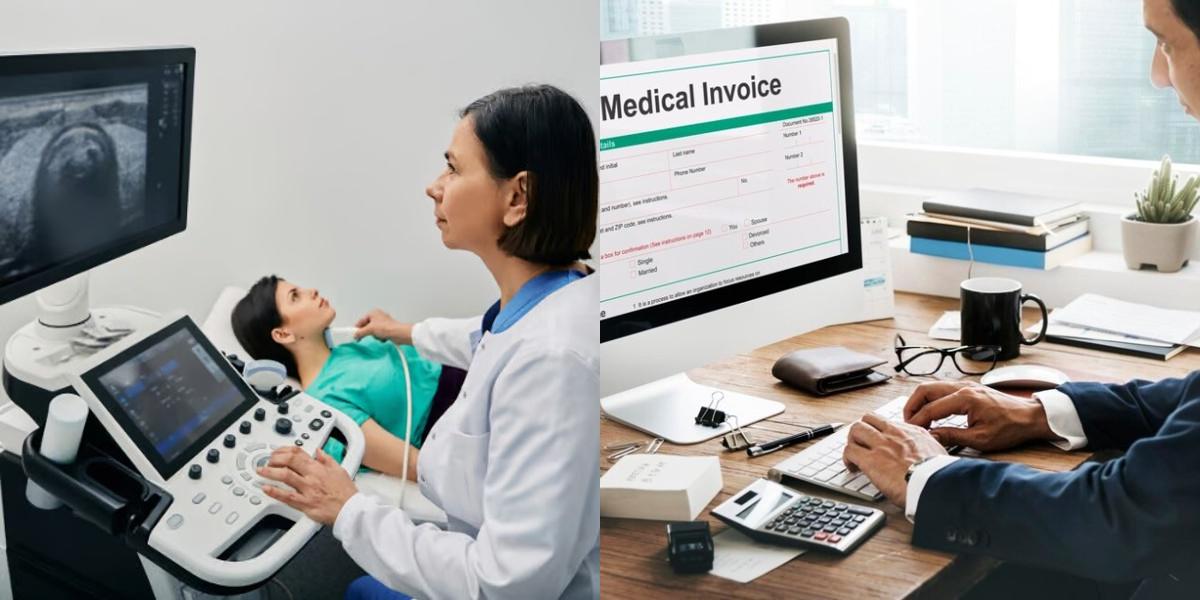Diagnostic Medical Sonographer vs Medical Biller and Coder

Key Points:
- Diagnostic Medical Sonographers use imaging equipment to create pictures of the body, while Medical Billers and Coders process medical claims and ensure accurate coding.
- Diagnostic Medical Sonographers typically earn higher salaries than Medical Billers and Coders.
- Diagnostic Medical Sonographers require an associate's or bachelor's degree, while Medical Billers and Coders can often get certified through online or in-person programs.
- Diagnostic Medical Sonography programs are generally more expensive and take longer to complete than Medical Billing and Coding programs.
In the field of healthcare, there are numerous career options available for individuals interested in pursuing a vocational training program. Two popular choices are becoming a diagnostic medical sonographer or a medical biller and coder. While both professions are integral to the healthcare industry, they involve different responsibilities and require different skill sets. In this blog post, we will explore the differences between a diagnostic medical sonographer and a medical biller and coder, as well as the job description, education and training requirements, and career outlook and salary for each profession.
Diagnostic Medical Sonographer vs Medical Biller and Coder: Education and Training
Diagnostic Medical Sonographer:
- Education: Most diagnostic medical sonographers complete a formal education program, such as an associate's or bachelor's degree in diagnostic medical sonography. Some programs may also require completion of prerequisite courses in anatomy, physiology, and medical terminology.
- Certification: While certification is not mandatory, many employers prefer to hire certified diagnostic medical sonographers. Certification is available through organizations such as the American Registry for Diagnostic Medical Sonography (ARDMS) and requires passing an examination.
- Continuing Education: Diagnostic medical sonographers are encouraged to pursue continuing education courses to stay updated on advancements in technology and techniques in the field.
Medical Biller and Coder:
- Education: Many medical billers and coders complete a vocational training program, which can range from several months to one year in duration. Some individuals may also choose to pursue an associate's degree in health information technology or a related field.
- Certification: Certification is not required but can enhance job prospects. The American Academy of Professional Coders (AAPC) and the American Health Information Management Association (AHIMA) offer certifications for medical billers and coders, which require passing an examination.
- Continuing Education: Medical billers and coders are encouraged to participate in continuing education programs to stay updated on coding systems, regulations, and industry trends.
Diagnostic Medical Sonographer vs Medical Biller and Coder: Career Outlook and Salary
Diagnostic Medical Sonographer:
- Career Outlook: According to the Bureau of Labor Statistics (BLS), employment of diagnostic medical sonographers is projected to grow 17 percent from 2019 to 2029, much faster than the average for all occupations. The increasing demand for diagnostic imaging procedures and the aging population contribute to this growth.
- Salary: The median annual wage for diagnostic medical sonographers was $75,920 in May 2020, according to the BLS. The highest 10 percent earned more than $106,870, while the lowest 10 percent earned less than $53,790.
Medical Biller and Coder:
- Career Outlook: The BLS projects a 8 percent employment growth for medical records and health information technicians, which includes medical billers and coders, from 2019 to 2029, faster than the average for all occupations. The increasing use of electronic health records contributes to this growth.
- Salary: The median annual wage for medical records and health information technicians was $44,090 in May 2020, according to the BLS. The highest 10 percent earned more than $73,370, while the lowest 10 percent earned less than $27,820.
Final Thoughts
Both diagnostic medical sonographers and medical billers and coders play crucial roles in the healthcare industry. While diagnostic medical sonographers focus on capturing images to aid in diagnosing and treating medical conditions, medical billers and coders ensure accurate coding and billing for healthcare services. Choosing between these two professions ultimately depends on an individual's interests, skill set, and career goals. Whether someone prefers patient interaction and technical imaging skills or working with coding systems and insurance guidelines, both professions offer stable career paths with opportunities for growth and advancement in the healthcare industry.
Dive into the expansive reach of Dreambound's programs across various locations. For a detailed exploration of the two vocations, visit the suggested blogs to uncover specific requirements and gain valuable perspectives on how to commence your journey effectively.

Alyssa Jane is part of the customer success team at Dreambound. She works with students, training providers, and employers, helping them have a smooth customer journey. She is also an ESL tutor and Licensed Psychometrician. She is fond of traveling, photography, and discovering new restaurants.





